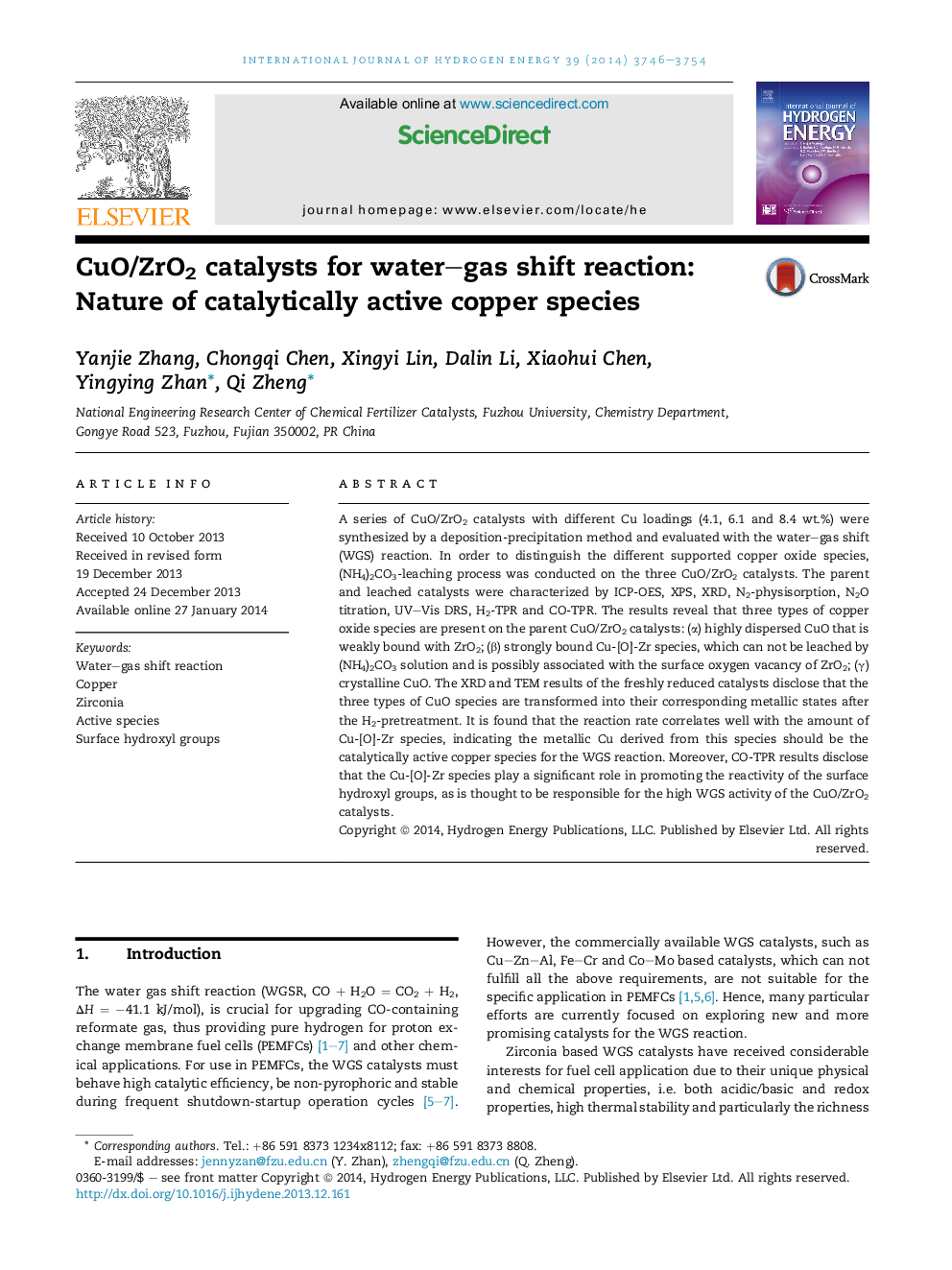| Article ID | Journal | Published Year | Pages | File Type |
|---|---|---|---|---|
| 7719996 | International Journal of Hydrogen Energy | 2014 | 9 Pages |
Abstract
A series of CuO/ZrO2 catalysts with different Cu loadings (4.1, 6.1 and 8.4 wt.%) were synthesized by a deposition-precipitation method and evaluated with the water-gas shift (WGS) reaction. In order to distinguish the different supported copper oxide species, (NH4)2CO3-leaching process was conducted on the three CuO/ZrO2 catalysts. The parent and leached catalysts were characterized by ICP-OES, XPS, XRD, N2-physisorption, N2O titration, UV-Vis DRS, H2-TPR and CO-TPR. The results reveal that three types of copper oxide species are present on the parent CuO/ZrO2 catalysts: (α) highly dispersed CuO that is weakly bound with ZrO2; (β) strongly bound Cu-[O]-Zr species, which can not be leached by (NH4)2CO3 solution and is possibly associated with the surface oxygen vacancy of ZrO2; (γ) crystalline CuO. The XRD and TEM results of the freshly reduced catalysts disclose that the three types of CuO species are transformed into their corresponding metallic states after the H2-pretreatment. It is found that the reaction rate correlates well with the amount of Cu-[O]-Zr species, indicating the metallic Cu derived from this species should be the catalytically active copper species for the WGS reaction. Moreover, CO-TPR results disclose that the Cu-[O]-Zr species play a significant role in promoting the reactivity of the surface hydroxyl groups, as is thought to be responsible for the high WGS activity of the CuO/ZrO2 catalysts.
Related Topics
Physical Sciences and Engineering
Chemistry
Electrochemistry
Authors
Yanjie Zhang, Chongqi Chen, Xingyi Lin, Dalin Li, Xiaohui Chen, Yingying Zhan, Qi Zheng,
